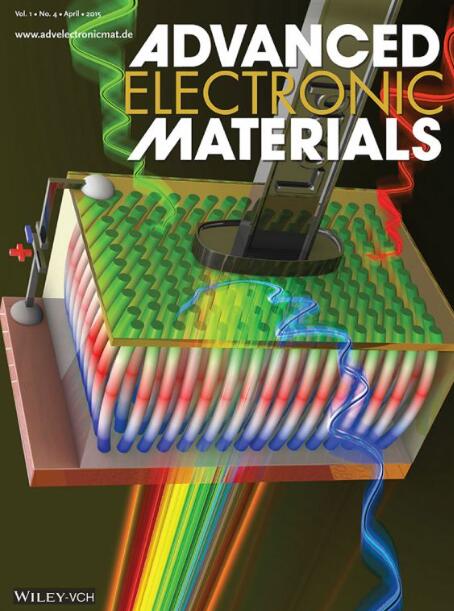研究在萘二亚胺基共轭聚合物中加入二甲基氨基丙基侧链的效果
IF 5.3
2区 材料科学
Q2 MATERIALS SCIENCE, MULTIDISCIPLINARY
引用次数: 0
摘要
本研究采用了两种方法--部分侧链截断法和互补相互作用法。在部分侧链截断中,带有萘二亚胺(NDI)基团和 3-(二甲基氨基)丙基(Dmap)链的 NDIDmap 被并入 P(NDI2OD-T2),产生了各种共聚物。增加聚合物中 NDIDmap 的含量可增强 π 各向异性,从而改善电荷传输。在互补作用中,NDIDmap 基团通过互补的 N-B 相互作用与三(五氟苯基)硼烷 (BCF) 复合。在含有 NDIDmap 的萘二亚胺基共轭聚合物中加入 BCF,可增强 π 堆积的相干长度(Lc)。然而,拉长的 Lc 并没有带来更优越的电子迁移率,这对长程 π 阶对于电荷传输至关重要的传统观点提出了挑战。为了进行比较,我们使用了在电子学上与 BCF 不同的三苯胺(TPA)。TPA 对薄膜微观结构和电荷传输参数的影响与 BCF 不同。虽然电子迁移率的改善并不显著,但这项研究证明了部分侧链截断和互补相互作用对萘二亚胺基共轭聚合物薄膜微结构和电荷传输的影响,为进一步的侧链工程铺平了道路。本文章由计算机程序翻译,如有差异,请以英文原文为准。
Investigating the Effect of Incorporating Dimethylaminopropyl Side Chains into a Naphthalenediimide‐Based Conjugated Polymer
Two approaches—fractional side‐chain truncation and complementary interactions—are employed in this study. In fractional side‐chain truncation, NDIDmap with the naphthalene diimide (NDI) group and the 3‐(dimethylamino)propyl (Dmap) chain is incorporated into P(NDI2OD‐T2), yielding various copolymers. Increasing the amount of NDIDmap in the polymer enhances π‐isotropy, which can improve charge transport. In complementary interactions, the NDIDmap group complexes with tris(pentafluorophenyl)borane (BCF) via complementary N–B interactions. Adding BCF to a naphthalenediimide‐based conjugated polymer with NDIDmap enhances the coherence length (L c ) of π‐stacking. However, the elongated L c does not result in superior electron mobility, challenging the conventional perspective that long‐range π ‐order is crucial for charge transport. For comparison, triphenylamine (TPA), which is electronically distinct from BCF, is used. TPA affects the thin‐film microstructure and charge‐transport parameters differently from BCF. Although the improvement in electron mobility is not very significant, this study demonstrates the effects of fractional side‐chain truncation and complementary interactions on the thin‐film microstructure and charge transport of naphthalenediimide‐based conjugated polymers, paving the way for further side‐chain engineering.
求助全文
通过发布文献求助,成功后即可免费获取论文全文。
去求助
来源期刊

Advanced Electronic Materials
NANOSCIENCE & NANOTECHNOLOGYMATERIALS SCIE-MATERIALS SCIENCE, MULTIDISCIPLINARY
CiteScore
11.00
自引率
3.20%
发文量
433
期刊介绍:
Advanced Electronic Materials is an interdisciplinary forum for peer-reviewed, high-quality, high-impact research in the fields of materials science, physics, and engineering of electronic and magnetic materials. It includes research on physics and physical properties of electronic and magnetic materials, spintronics, electronics, device physics and engineering, micro- and nano-electromechanical systems, and organic electronics, in addition to fundamental research.
 求助内容:
求助内容: 应助结果提醒方式:
应助结果提醒方式:


